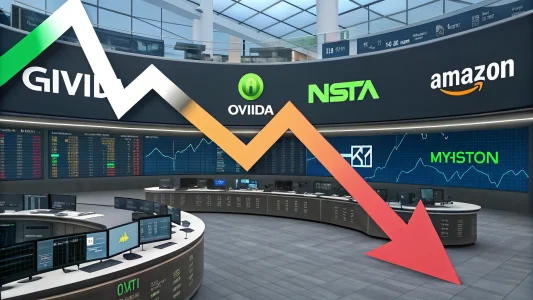Traditional investing is often a limited and narrow form of wealth generation. Things like publicly traded stocks and bonds have nuance, but they only go so far for an investor looking to truly diversify their portfolio. They also don’t offer the same high-risk, high-reward that most investors want to integrate into a more extensive distribution of assets.
If you already have a solid investment structure and are looking for ways to expand and improve your upside, you want to consider private credit. This unique form of investing is similar to but not quite the same as private equity.
Investing in private credit has the potential to generate attractive returns that are superior to many traditional fixed-income options. However, as is usually the case with investments that can pay off handsomely, there are more calculated risks involved.
This article will explore this asset class’s characteristics, how it works, its benefits, and its drawbacks. We’ll conclude with a list of several key considerations that investors should consider when assessing opportunities in the private credit world.
Table of Contents
ToggleWhat Is Private Credit?
Publicly traded investment options typically involve brokers or bank lenders. Borrowers go to large, established institutions where they can invest in relatively stable investment vehicles, such as government bonds or corporate stocks. These classic forms of predictable investments trade on an exchange and are easy to pick up and liquidate as needed.
In comparison, investing in private credit deals typically occur between non-bank lenders and borrowers. These parties seek to loan and borrow money, respectively, without the help of government assets or traditional corporate intermediaries.
While related in some sense, investing in private credit isn’t the same as investing in private equity. The former is focused on loaning funds, while the latter specializes in mergers, acquisitions, and reselling at a profit. Both take place through non-bank lenders, but they are two distinct activities.
Who Is Involved in Private Credit?
The nontraditional approach to private credit allows several different groups to get involved in the credit process. These participants can come from a variety of backgrounds and institutions.
For instance, borrowers can consist of small and medium businesses. These tend to seek cash infusions to fuel an effort toward reaching startup goals, achieving growth objectives, and even preparing for mergers and acquisitions.
On the lender side of the equation, private credit firms often lend money to direct, rehabilitate, or grow a company. Institutional investors and businesses with capital to invest are also often involved in private lending.
How Does Private Credit Work?
Private credit deals are financial transactions when non-bank lenders provide loans directly to borrowers. As such, following specific guidelines when structuring each deal is essential. For instance, most deals will include specific terms, such as:
- Clarifying the precise amount of the loan.
- Determining the interest rate.
- Establishing the maturity date.
- Clarifying any collateral held against repayment.
- Creating covenants delineating the obligations and rights of borrowers and lenders.
Often, loans also involve lengthy assessments by a lender regarding a borrower’s creditworthiness, financial stability, and any risks involved in a private credit deal.
How Much More Effective Is Private Credit Compared to Traditional Models?
Things like stocks and bonds can be a way to generate wealth consistently. However, the payoff could be faster and more manageable.
For instance, Jeff Moore, a manager at Fidelity, recently reported that bonds were becoming an attractive investment option again. He pointed out that yields are moving higher from recent lows of 1.42%, saying, “Now the agg has an average yield of 5%, intermediate-maturity investment grade bond yields average 5.35%, and longer maturities offer an average yield of 5.65%.”
To put it another way, the average bond is yielding five percent. If held long enough, the yield might reach closer to six percent—and that’s considered an attractive return on a corporate or US Treasury bond in early 2024.
Stocks are a little better, with NerdWallet reporting in May 2024 that the average annual stock return, as judged by the S&P500 index, is 10%. However, the consumer finance site clarifies that this doesn’t consider inflation, adding, “Investors can expect to lose purchasing power of 2% to 3% every year due to inflation.”
While it’s difficult to put specific numbers on activity in the private credit sector, its ability to yield high returns at times is a well-known reality. The annual return on investing in private credit from September 2022 to September 2023 was over 11%. The average return in the past ten years is estimated to be near 9%—and that doesn’t even consider the other benefits of a private investment.
The Benefits of Private Credit
Private credit offers investors several key benefits besides generating wealth. The most obvious of these is diversification. This alternative option allows investors to spread out their portfolios, reducing risk in the process.
Private credit is also a surprisingly effective way to bring a greater sense of consistency to a portfolio. Clay Bethune, founder and CEO of Fintech Finance Group, a firm specializing in building companies in the fintech sector, recently wrote, “Private Credit provides an opportunity for higher and consistent yields without the fluctuations often seen in the stock market.”
Along with avoiding stock market fluctuations, private lending can provide portfolio stability through a structured income stream. It also allows for customized deals and can even empower lenders to support businesses they believe in.
The Drawbacks of Private Credit
As with all investments, there are drawbacks to consider, as well. In the case of private credit, one of the biggest red flags is illiquidity. It’s much harder to exit a position with a private loan without losing significant capital.
Another concern is if a borrower defaults. While there may be a certain degree of recourse from the borrower’s contractual obligations, this can still lead to significant financial losses for investors in many cases.
When your investment vehicle is private credit, especially for businesses, this can put undue pressure on a company to be profitable. For instance, Forbes Council Member Jen Spencer points out that “Two key things private equity values are profitability and growth, so much so that PE firms often follow the Rule of 40, the idea that a company’s growth rate and profit margin should add up to at least 40%.”
While this speaks to private equity, the same concept of high profit, or at least high revenue, applies to private credit lending. It emphasizes cash flow as a way to repay a loan and is critical to making private credit a legitimate lending option. This need for ongoing cash flow can interfere with long-term growth. It encourages the prioritization of revenue and profit margins over investing in or maintaining more sustainable long-term business practices.
Key Considerations When Navigating Private Credit
If you are serious about investing in private credit, make sure to do your homework first. Here are a few key considerations. Use the questions below as a checklist as you gauge your initial investment opportunities.
- Illiquidity: Are you ready to remain in an illiquid state for the duration of each private credit contract?
- Premiums: Have you considered charging an illiquidity premium to offset the risks that come with an immovable asset?
- Creditworthiness: What standards and measures do you need to establish to gauge the creditworthiness of each borrower? What data can you gather to ensure each private credit investment takes place with a safe, reputable entity?
- Deal structure: From healthy interest rates to the correct maturity rate, what are the structural elements of each deal that are critical to your private credit investing?
- Compliance: What taxes, laws, and regulations should you observe in your geographic location to ensure you don’t run into any costly compliance issues as you distribute loans and receive payments?
- Portfolio management: Are you considering risk concentration as part of your more extensive investment portfolio and within your private credit activities?
Private credit has plenty of potential. However, it requires due diligence and careful consideration to ensure each investment pays off in the end.
Considering Investing in Private Credit as an Investment Option
Private credit is an effective way to diversify a portfolio. It allows investors to control and, at times, mitigate risk. At the same time, it enables stabilizing gains and establishing predictable income streams.
However, private lending on a larger scale has several major considerations. You want to protect your investment against unnecessary risks from illiquidity to borrower defaults.
As you consider investing private credit, use the list of critical considerations above to stage your investment resources. Then, select high-profile candidates with the potential to yield high returns with minimal risk. The result can be a more balanced, reliable, and profitable investment portfolio and a more successful long-term approach to generating wealth.
















